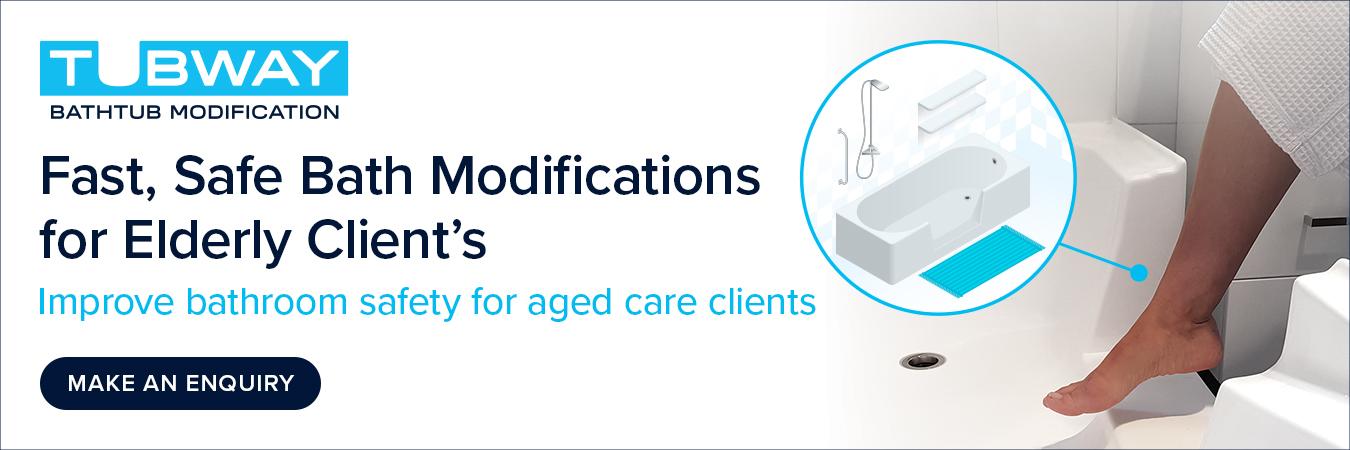
Published: Monday 6 January 2025
Introduction
A guide to occupational therapy driving assessments
For many of us, driving forms an important part of our lifestyle and identity, facilitating freedom and independence. It is, however, a complex task, involving physical, visual, thinking and regulation skills—often at the same time. Any changes or loss of function in any one of these areas—due to ageing, illness or injury—may affect our ability to drive.
Sometimes people are not aware of changes in their abilities, particularly changes in cognitive abilities. When our abilities change, we need to be guided by our GP, allied health professionals, family and friends as to the extent to which our health impacts on our ability to start, resume or continue driving.
Occupational Therapists (OTs) work with people to help them to be as independent as possible in everyday activities. In particular, OTs help with Driving Assessments when our abilities change.
I’ll know when I need to stop, won’t I?
Lots of people say that they will know when it’s time to stop driving. The reality is that some won’t. If a person develops some form of cognitive decline—such as dementia, Alzheimer’s Disease or Parkinson’s Disease—they may lose the ability to recognise that their thinking skills are impaired. This can result in situations where a driver is completely unaware that their driving has become unsafe.
In these situations, you need to rely on those around you—family, friends, GPs and other health professionals—and listen to them when they express concerns about your driving.
The privilege to drive comes with responsibilities. One of those responsibilities is to ensure that you are medically fit to drive. Failure to report a change in your abilities and choosing to drive may put lives at risk and may result in serious legal and financial consequences, including loss of insurance cover.
Your Legal Responsibility: Driving is a privilege, not a right.
What’s the process in my state/territory?
While driving assessments (and the roles and responsibilities concerning medical fitness) share much in common throughout Australia, specific processes and procedures do vary across each state and territory.
Commonalities across Australia
Driving fitness in all states and territories is guided by Austroads—the peak organisation of Australasian road transport and traffic agencies. The responsibilities of drivers, health professionals and the local licensing authority are outlined on the next page.
Driver
- To report to the driver licensing authority any long-term or permanent injury or illness that may affect their ability to drive safely.
- To respond truthfully to questions from a health professional regarding their health status and the likely impact on their driving ability.
- To adhere to prescribed medical treatment.
- To comply with requirements of a conditional licence as appropriate, including periodic medical reviews.
Health professional
- To assess the person’s fitness to drive based on relevant clinical and functional information and on the relevant published medical standards.
- To advise the person regarding:
- the impact of their medical condition or disability on their ability to drive and recommend restrictions, ongoing monitoring, rehabilitation/training or transitional arrangements as required.
- their responsibility to report their condition to the driver licensing authority if their long-term or permanent injury or illness may affect their ability to drive safely.
- To treat, monitor and manage the person’s condition with ongoing consideration of their fitness to drive.
- To report to the driver licensing authority regarding a person’s fitness to drive, including their suitability to hold a conditional licence, in accordance with legislated requirements and public safety and ethical considerations.
Note: Medical practitioners or other clinicians do not have the legal authority to restrict or reinstate a patient’s driver licence; this can only be done by the relevant driver licensing authority.
Driver licensing authority
- To make all decisions regarding the licensing of drivers. The driver licensing authority will consider reports provided by health professionals, police and members of the public, as well as crash involvement and driving histories.
- To make all decisions regarding the issue of conditional licences. The driver licensing authority will consider the recommendations of health professionals as well as other relevant factors.
- To educate the driving public of their responsibility to report any long-term or permanent injury or illness to the driver licensing authority if the condition may affect their ability to drive safely.
What’s the process in my state/territory?
Australian Capital Territory
If you are 75 years of age or older, you are required to be examined annually for medical fitness by a doctor.
Additionally, you are legally required to report any permanent illness, injury or incapacity that may impair your ability to drive safely. Certain medical conditions and diagnosis require annual medical assessments and, at times, a driving assessment may be required.
Further information: ACT Driver Licence Information Medical Conditions
New South Wales
When you reach 75 years of age, you’ll need to have a medical review every year to keep your licence. Roads and Maritime Services (RMS) will send you a form around eight weeks before your birthday for your doctor to complete.
Additionally, the law requires you to report to the RMS any long-term or permanent medical condition that is likely to affect your ability to drive. When reporting a condition, the RMS will request a medical report from your treating doctor or specialist. Your doctor may recommend to the RMS that you undertake an OT Driving Assessment to determine if the medical condition impacts on your ability to drive safely.
Further information: Roads and Maritime Services, Older Drivers; Roads and Maritime Services, Are You Fit To Drive?
Northern Territory
While there are no aged based restrictions in the Northern Territory, you are legally required to notify the Motor Vehicle Registry (MVR) of any medical condition that may impair your ability to drive.
Further information: Northern Territory Department of Transport, Senior Drivers; Northern Territory Department of Transport, Medical fitness to drive
Queensland
Everyone 75 and over who holds a Queensland driver licence must carry a current Medical certificate for motor vehicle driver form (F3712) at all times when driving and comply with any stated conditions.
You are required to complete part 1 of the form and then ask your health professional to complete part 2, including the tear-off medical certificate. Once your health professional has completed and signed the form, tear off the medical certificate portion and carry it with you when you drive—you can be fined if you don’t.
Further information: Medical Certificates for Older Drivers; RACQ, Older Drivers’ Self-Assessment Questionnaire
South Australia
Senior drivers that don’t have medical conditions are sent an annual self assessment once they reach the age of 75. You need to visit a doctor to complete the self-assessment and failing to do so will invalidate your licence.
You are required by law to report any medical condition that could affect your ability to drive safely. This must be done at the time the condition occurs, not just when renewing your licence.
Your health professional may recommend that you complete a Practical Driving Assessment. This may be necessary to review your skills and knowledge for driving safely and can be recommended at any time regardless of age.
Further information: Medical Fitness To Drive; My Car Licence, Older Drivers
Tasmania
Drivers aged 75 years and over in Tasmania no longer need to undertake an annual medical assessment to keep their licence. It is essential that all older drivers appropriately self-assess their driving ability and make sensible decisions as to when and where they should drive.
Regardless of age, you have a legal responsibility to notify the Registrar of Motor Vehicles if you develop a permanent or long-term medical condition likely to affect your driving ability.
Further information: Transport, Assessing Fitness to Drive; Transport, Tasmanian Older Drivers Website
Victoria
Should you develop any long-term or permanent physical or psychological conditions that might affect your ability to operate a vehicle, you’re legally obliged to notify VicRoads about these changes.
VicRoads may legally ask you to undertake medical or specialist reviews or on road assessments. This may include asking you to have an occupational therapy driver assessment to show that you can drive safely. Even if you are an experienced driver, you may be asked to have this assessment. The test will be conducted in a driving instructor’s car.
Further information: VicRoads, Medical Review Process Stage 2 (see “Occupational Therapy Driving Assessment” heading); Information about older drivers
Western Australia
In Western Australia, once you reach the age of 80 you’re required to undergo annual medical assessments and complete the senior driver‘s licence renewal declaration before you’re able to renew your licence.
Those aged 85 years and older are not required to undertake a mandatory Practical Driving Assessment (PDA) prior to the renewal of their driver‘s licence, unless recommended to do so by a health professional.
Further information: Department of Transport, Senior Driver Licence Renewals
Before the assessment
Getting started
While it’s often a GP who recommends that your driving needs to be looked at more closely, an occupational therapist, geriatrician, neurologist, rehabilitation physician, or any other health professional can also make the recommendation. Additionally, you may feel the need to self-notify about changes to your driving capabilities.
They will write to their state-based Licence Review Unit who will then make a decision based on the health professionals report. The Review Unit may decide based on that information alone, or they may ask for more medical information.
The additional medical information could be a specialist’s report (such as a neurologist or a cardiologist) or it could take the form of an Occupational Therapy Driving Assessment—or both.
What is an occupational therapist?
Occupational Therapists (OTs) are qualified health professionals who work with people of all ages and abilities to do the things they need and want to in all aspects of life, such as taking care of oneself and others, working, volunteering, and participating in hobbies, interests and social events. Occupational Therapists call all of these activities “occupations”. For more information on occupational therapy, visit the website: About Occupational Therapy
Why be assessed by a driver-trained occupational therapist?
Research has shown that the best way to assess a person’s capacity to drive is to assess them actually driving. Driver-Trained Occupational Therapists (sometimes referred to as an Occupational Therapy Driving Assessor) are the only health professionals qualified to conduct a practical (on road) driving assessment of how a person’s medical condition impacts their capacity to drive.
Why do occupational therapists conduct driving assessments?
- OTs are skilled at assessing a person’s ability to perform a task by considering information about the person, the task and the environment
- OT driving assessors have completed additional training to work in this area
- Off- and on- road assessments by an OT are considered to be the gold standard in assessing fitness to drive
Research is happening all the time to develop tools that can be used to predict driving performance without taking someone out for a practical driving assessment. It is still currently best practice to assess someone actually driving in order to determine if their medical condition impacts on their capacity to drive.
The assessment
What does an OT driving assessment involve?
OTs who conduct driving assessments have completed specialised post-graduate training. They understand how important driving is for a person’s life and try to make the process as simple and stress-free as possible. Ultimately the OT’s goal is to keep people driving for as long as they are safe to do so.
What is needed?
- A medical report from your treating doctor or specialist indicating what your medical condition is, and that you are medically fit to be assessed for driving
- An eyesight report from an optometrist or ophthalmologist may also be required
- A current driver’s licence or learner’s licence
- Glasses, contact lenses and/or hearing aids if required
- In some states the OT must obtain clearance from Medical Review before they can take you on the test.
The assessment has two parts: an Off-Road Assessment and an On-Road Assessment. Both parts may take place on the same day or they may be on different days. The assessment is just as valid if it takes place on one day or on different days. The assessment may take place at the OT’s assessment centre, or the OT may go to your house.
Off-road assessment
The off-road assessment involves an interview and clinical assessment which may include:
- Medical background
- Driving history
- Vision
- Physical abilities
- Decision-making and judgement skills related to driving
- General practical knowledge of road law
The off-road part of the assessment may take up to 2 hours.
On-road assessment
The on-road assessment takes place in the assessment car, which has dual controls. That is, the driving instructor has their own pedal/s in addition to the standard driving pedals. You could be assessed in an automatic vehicle or a manual vehicle, depending on what you are used to or what your medical condition requires.
In the car, you will be driving. A qualified driving instructor will be in the front passenger seat, and a Driver Trained OT will be in the left rear passenger seat, recording assessment details. In some cases, there is also an orthoptist and/or an interpreter in the back seat.
The OT may also be a licensed driving instructor and may choose to sit in the front passenger seat.
Understandably, completing an on-road driving assessment can be a stressful experience. You will be given time to become familiar with a new vehicle at the start of the assessment.
After the assessment
Feedback
Immediately following the assessment, the OT will provide feedback regarding the impact of your medical condition or disability on your ability to drive safely according to legal and driving skill requirements.
Reporting
A report detailing the driving assessment outcome and recommendations is sent to the referring doctors and the local transport authority. The transport authority has specially trained staff responsible for making decisions regarding a person’s licence status based on the results and recommendations of the medical and OT driving assessment reports.
Possible outcomes of an OT driving assessment
There are a number of recommended outcomes that can result from the OT Driving Assessment. These include:
- The driver is fit to drive with no further intervention
- The driver is fit to drive with certain conditions such as a limited distance from home, driving only in daylight hours or driving an automatic vehicle only
- Driving lessons to learn compensatory techniques, to regain confidence or to upgrade driving skills
- Driving lessons to learn competency in driving with specialised vehicle modifications such as a steering aid, hand controls or a left foot accelerator. To drive legally with specialised vehicle modifications a person must have the modifications endorsed on their licence
- Cancellation (suspension) of the licence whilst waiting for further recovery, or
- Unfit to drive, with licence cancellation
- At times a person may be issued with a learner’s licence or other licence conditions in order to complete the driving assessment or driving tuition under the supervision of other drivers or driving instructors. In some cases, the person may only drive with a licenced driving instructor in a dual control vehicle.
Ongoing OT driving assessments
An on-road re-assessment may be necessary to assess a person’s progress following driving lessons. Further OT re-assessments may also be required if a diagnosis of a progressive medical condition has been given—for example, dementia or multiple sclerosis.
Costs involved
Fees for an OT driving assessment can vary. The cost for the assessment is not covered by the driving licensing authority. Medicare, third party insurance and/or private health insurance rebates may be available in some situations.
Any costs for vehicle modifications and/or lessons with a licensed driving instructor are not included as part of the OT assessment costs. Discuss fees with your doctor and/or occupational therapist ahead of booking an appointment.
What happens next?
After the OT has completed the assessment and sent a report to your doctor, you should make an appointment with your doctor to discuss the outcome of your assessment.
Additional considerations
Appointment availability
Waiting times for driving assessments can vary from a few weeks to a few months. The Driver-Trained OT involved can liaise with the Transport Authority Licence Review Unit if there are issues with licence expiry dates while waiting for the assessment to be completed.
Finding a driver-trained occupational therapist
Those looking to find a Driver-Trained Occupational Therapist are encouraged to view OTA’s Find An OT Directory on the Occupational Therapy Australia website to search for a driving assessor in your local area.
Alternatives to driving
Driving assessments are about safety and, whenever possible, keeping you connected with your community. As previously outlined, if appropriate, occupational therapists may make recommendations which allow you to stay on the road, and drive with modifications to your car, and/or with restrictions or conditions to your driving. Alternatively, if this is not appropriate, they may recommend that you cease driving.
Although you may have been dependent on your car for years—decades even— there are often convenient, low-cost alternatives available for people who choose not to, or who can no longer, drive. These include:
- Lifts from friends or family members
- Taking public transport
- Using community transport
- Using various taxi subsidy schemes (also known as “Half-Price Taxi Vouchers” in some locations)
- Doing shopping online with home delivery
Which option is cheaper?
Ceasing to drive can mean more money in your pocket. Although you may need to spend money on subsidised taxis, community transport or home delivery, you will likely save a significant amount of money on car-related expenses, including insurance, maintenance, petrol and registration costs.
Further information
About Occupational Therapy
An online guide to Occupational Therapy and the work Occupational Therapists do.
http://aboutoccupationaltherapy.com.au/
Driving & Dementia: A Decision-Making Tool
The researchers of this project have spoken with drivers over 55 as well as health professionals to develop a Driving and Dementia Decision Aid (DDDA) to guide and assist individuals to make informed and empowered decisions and minimise stress.
https://globalchallenges.uow.edu.au/living/UOW194368.html
Austroads’ Assessing Fitness to Drive
Used by health professionals and Licencing Authorities to determine driving fitness.
https://www.onlinepublications.austroads.com.au/downloads/AP-G56-17
Occupational Therapy Australia
Occupational Therapy Australia (OTA) is the national professional association for occupational therapists in Australia.
Our members are occupational therapists, students and those working in the profession in a variety of practice areas to enable people to participate in meaningful activities.
Acknowledgements
Occupational Therapy Australia (OTA) would like to thank the authors of this e-book for their valuable contributions.
Primary Authors: Jenny Wise, Occupational Therapist and Nick Neville, Occupational Therapist
Localised content provided by: OTA National Driving Taskforce
© Occupational Therapy Australia 2018
All copyright and publication enquiries should be directed to marketing@otaus.com.au.
Disclaimer
This e-book provides general information only. The content provided in this e-book, and in any linked materials, are not intended and should not be construed as direct medical advice. If the reader or any other person has a medical concern, they should consult with an appropriately registered health professional.
Related Tags





